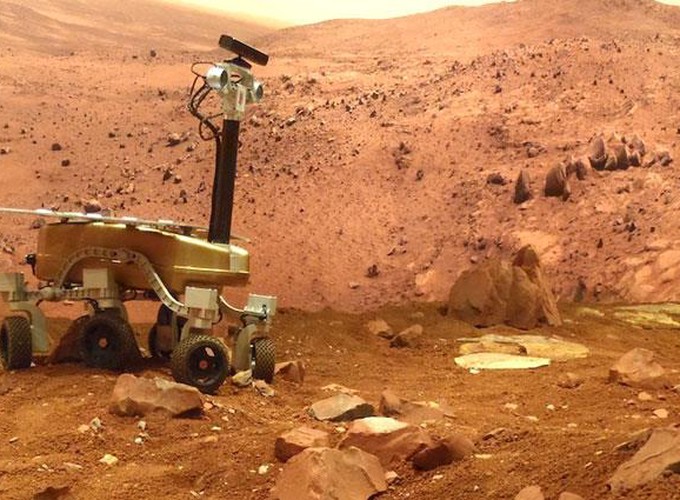Motion Planning and Stochastic Control with Experimental Validation on a Planetary Rover

Motion Planning and Stochastic Control with Experimental Validation on a Planetary Rover
Abstract
Planetary rovers are required to safely navigate across unstructured and hazardous terrain with increasing levels of autonomy. Autonomy is necessary to react to impending danger because remote control has been proved challenging and dangerous for planetary rovers due to the large communication delays. Safety is especially a concern in space applications where a robot is unaccompanied throughout its entire mission. Unstructured terrain poses several types of hazards to a robot such as getting stuck, toppling or scraping against rocks. In a dense collection of localised hazards, platform safety is very sensitive to deviations from an intended path. To maintain the safety of the platform during navigation, planetary rovers must consider control uncertainty during motion planning. Thus, not only does the system need to make predictions of action outcomes, it also needs to estimate the accuracy of these predictions. The aim of this research is to provide planetary rovers with the ability to plan motions to goal regions that optimise the safety of the platform by including information about the accuracy of its controls. Modelling such control uncertainty is diffcult due to the complex interaction between the platform and its environment. In this thesis, we propose an approach to learn the outcome of control actions from experience, represented statistically using a Gaussian Process regression model. This model is incorporated explicitly in the planning process using dynamic programming to construct a control policy for navigation to a goal region. Motion planning strategies are considered that take into account different types of uncertainties, including uncertainty in distance, heading and yaw of the platform, across various motion primitives. The approach is implemented on a holonomic rover with six wheels and a Rocker-bogie frame and tested on a Mars analogue terrain that includes flat ground, small rocks, and non-traversable rocks. Planning is computed over a terrain map built using an on-board RGB-D camera. We report the results of 200 simulated and 95 experimental trials that validate the approach. These results demonstrate that explicitly incorporating knowledge of control uncertainty into the motion planning process increases platform safety by decreasing the likelihood of the rover getting stuck and reducing the cost accumulated over the executed path. Accounting for heading uncertainty resulted in the most significant increase in platform safety.